Front End Upper Tie Bar Support Sectioning - MAG Welding
Note : According to different corrosion warranties, only the regional mandatory joining methods are allowed.
Removal Procedure
Warning : Refer to Approved Equipment for Collision Repair Warning in the Preface section.
Warning : Refer to Collision Sectioning Warning in the Preface section.
Warning : Refer to Glass and Sheet Metal Handling Warning in the Preface section.
- Disable the SIR System. Refer to SIR Disabling and Enabling .
- Disconnect the negative battery cable. Refer to Battery Negative Cable Disconnection and Connection .
- Remove all related panels and components.
- Visually inspect the damage. Repair as much of the damage as possible.
- Remove the sealers and anti-corrosion materials from the repair area, as necessary. Refer to
Anti-Corrosion Treatment and Repair : Base .
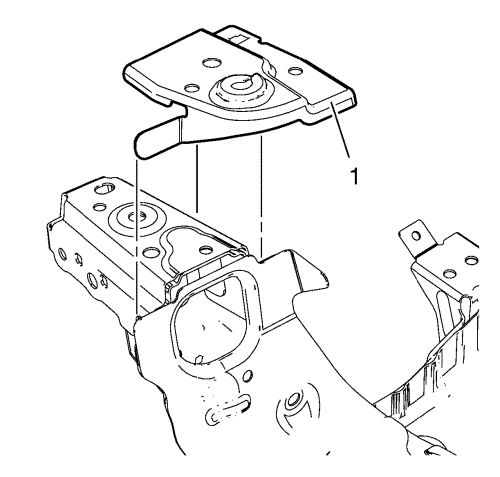
- Locate and mark all the necessary factory welds of the bonnet front bumper bracket (1).
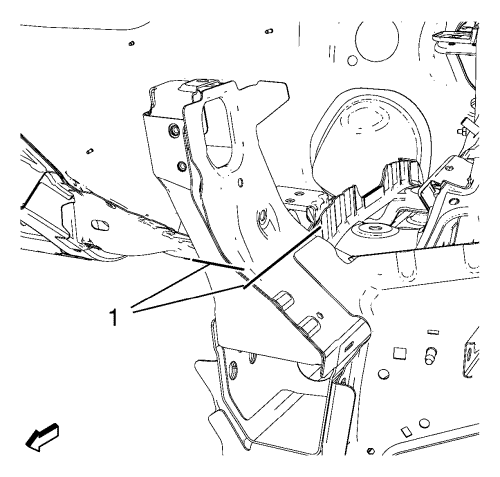
- Create cut lines (1) on the front end upper tie bar support.
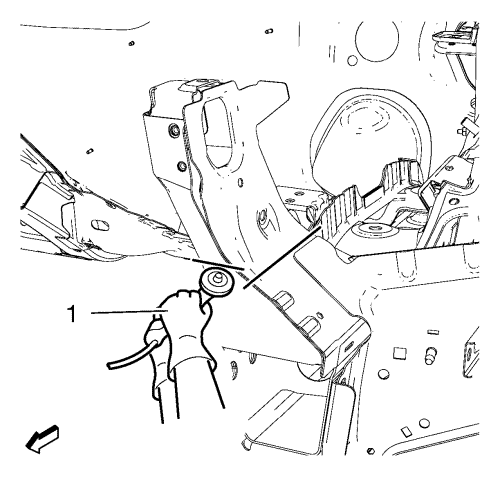
Note : Do not damage any inner panels or reinforcements.
- Cut the panel where sectioning is to be performed (1).
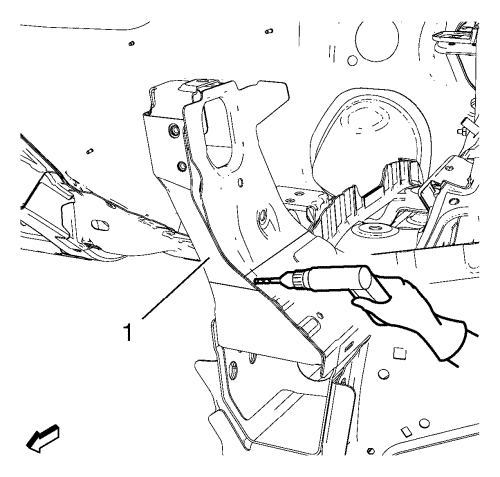
- Locate and mark all the necessary factory welds of the front end upper tie bar support (1).
- Drill all factory welds. Note the number and location of welds for installation of the service assembly.
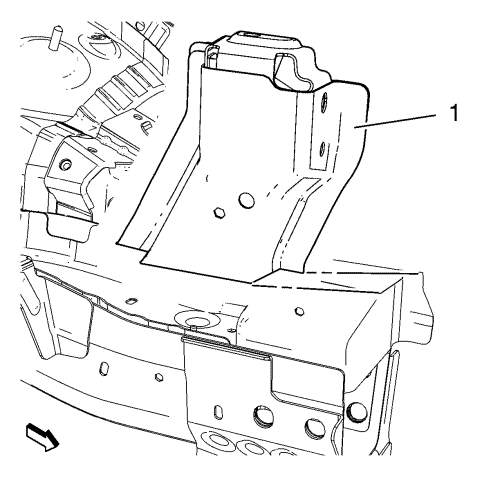
- Remove the damaged front end upper tie bar support (1).
Installation Procedure
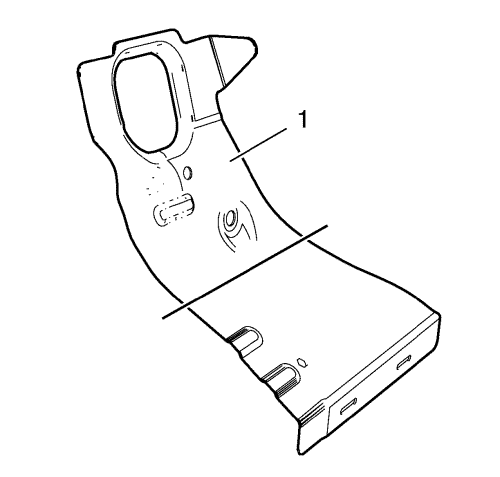
- Cut the front end sheet metal cross panel reinforcement (1) in corresponding locations to fit the remaining original panel. The sectioning joint should be trimmed to allow a gap of one-and-one-half-times the metal thickness at the sectioning joint.
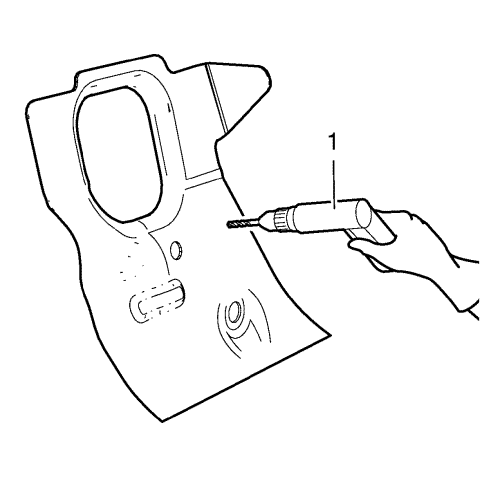
- Drill 8 mm (5/16 in) holes for plug welding as noted from the original panel (1).
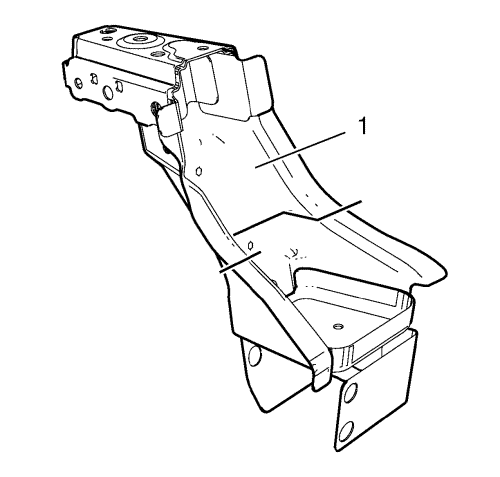
- Cut the front end upper tie bar support (1) in corresponding locations to fit the remaining original panel. The sectioning joint should be trimmed to allow a gap of one-and-one-half-times the metal thickness at the sectioning joint.
- Create a 50 mm (2 in) backing plate from the unused portion of the service part.
- Drill 8 mm (5/16 in) holes for plug welding along the sectioning cut on the remaining original part. Locate these holes 13 mm (1/2 in) from the edge of part and spaced 40 mm (1 1/2 in) apart.
- Prepare all mating surfaces as necessary.
- Fit the backing plates halfway into the sectioning joints, clamp in place and weld to the vehicle.
- Align the front end upper tie bar support.
- Clean and prepare the attaching surfaces for welding.

- Position the front end upper tie bar support (1) on the vehicle.
- Verify the fit of the front end upper tie bar support.
- Clamp the front end upper tie bar support into position.
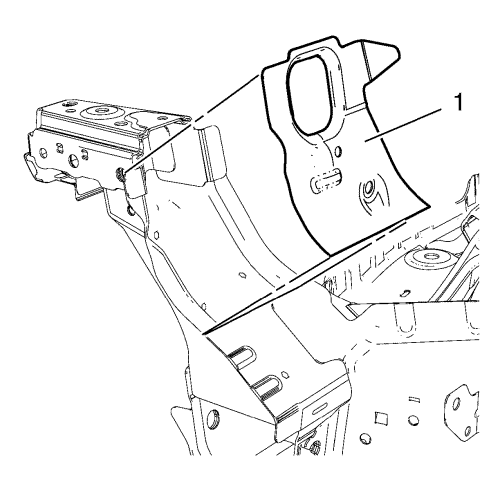
- Position the front end sheet metal cross panel reinforcement (1) on the vehicle.
- Verify the fit of the front end sheet metal cross panel reinforcement.
- Clamp the front end sheet metal cross panel reinforcement into position.

- Weld accordingly (1).
- To create a solid weld with minimum heat distortion, make 25 mm (1 in) stitch welds along the seam with 25 mm (1 in) gaps between them. Then go back and complete the stitch weld.
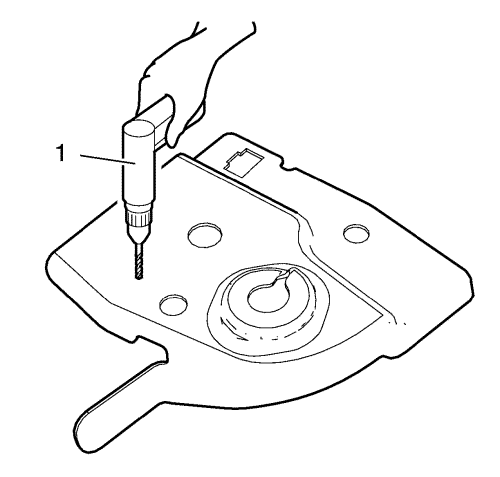
- Drill 8 mm (5/16 in) holes for plug welding as noted from the original panel (1).

- Position the bonnet front bumper bracket (1) on the vehicle.
- Clamp the bonnet front bumper bracket into position.
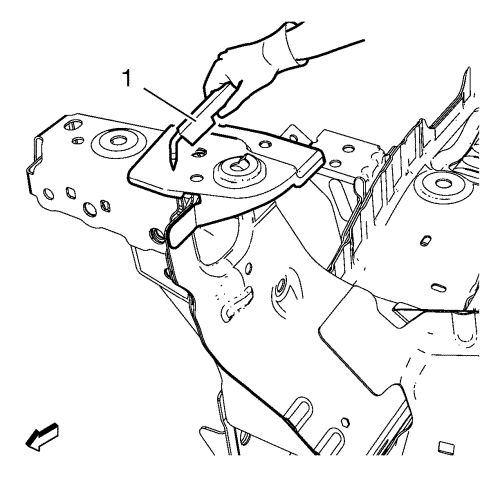
- Plug weld accordingly (1).
- Apply the sealers and anti-corrosion materials to the repair area, as necessary.
- Paint the repaired area.
- Install all related panels and components.
- Connect the negative battery cable. Refer to Battery Negative Cable Disconnection and Connection .
- Enable the SIR system. Refer to SIR Disabling and Enabling .
| © Copyright Chevrolet. All rights reserved |













